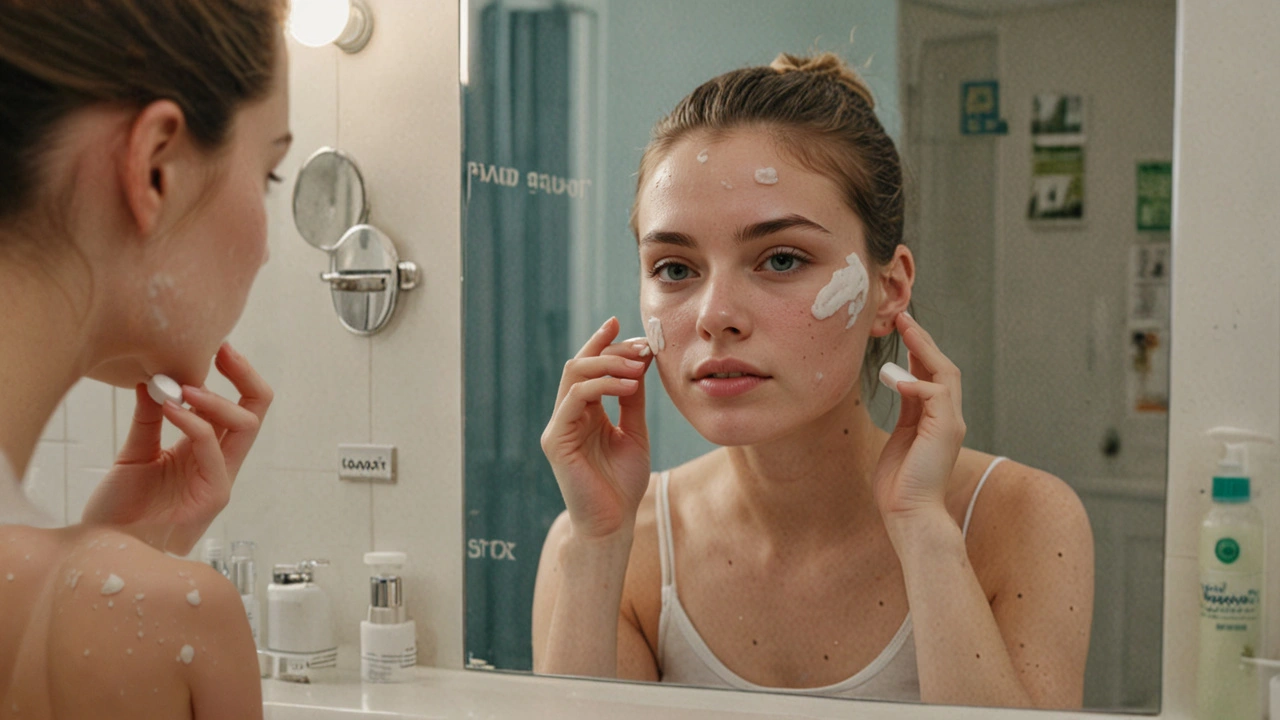If you’re sick of waking up to new spots, you’re not alone. Acne shows up for many reasons – hormones, stress, bacteria, or even the soap you use. The good news? There are real‑world fixes that don’t require a PhD in dermatology.
First stop: the pharmacy aisle. Look for products with benzoyl peroxide (2½% to 5%) or salicylic acid (0.5% to 2%). Benzoyl peroxide kills bacteria and reduces inflammation, while salicylic acid unclogs pores. Apply a thin layer once a day; more isn’t better – it can irritate the skin.
Another easy pick is a retinoid cream like adapalene (0.1%). It speeds up cell turnover, so new pimples don’t have time to form. Use it at night after washing your face and follow with a gentle moisturizer to keep dryness in check.
If OTC stuff isn’t enough, talk to a doctor about prescription tretinoin (Retin‑A). It’s the gold standard for stubborn acne and works faster than over‑the‑counter retinoids. Start with a low concentration, apply every other night, and build up as your skin adjusts.
For those who prefer natural routes, try tea tree oil (5% to 10%) as a spot treatment. It has antimicrobial properties similar to benzoyl peroxide but is gentler for sensitive skin. Apply with a cotton swab only on active lesions – overuse can cause dryness.
A diet tweak can also help. Cutting back on high‑glycemic foods like white bread and sugary drinks may lower insulin spikes that fuel oil production. Swap in more leafy greens, berries, and omega‑3 rich fish to give your skin a calmer environment.
Don’t forget hygiene basics: wash your face twice daily with a mild cleanser, avoid touching your face, and change pillowcases weekly. These tiny habits stop extra bacteria from settling on your skin.
Finally, be patient. Most acne treatments need 4‑6 weeks to show results. If you see no improvement after that, revisit your regimen or ask a dermatologist for a tailored plan.
